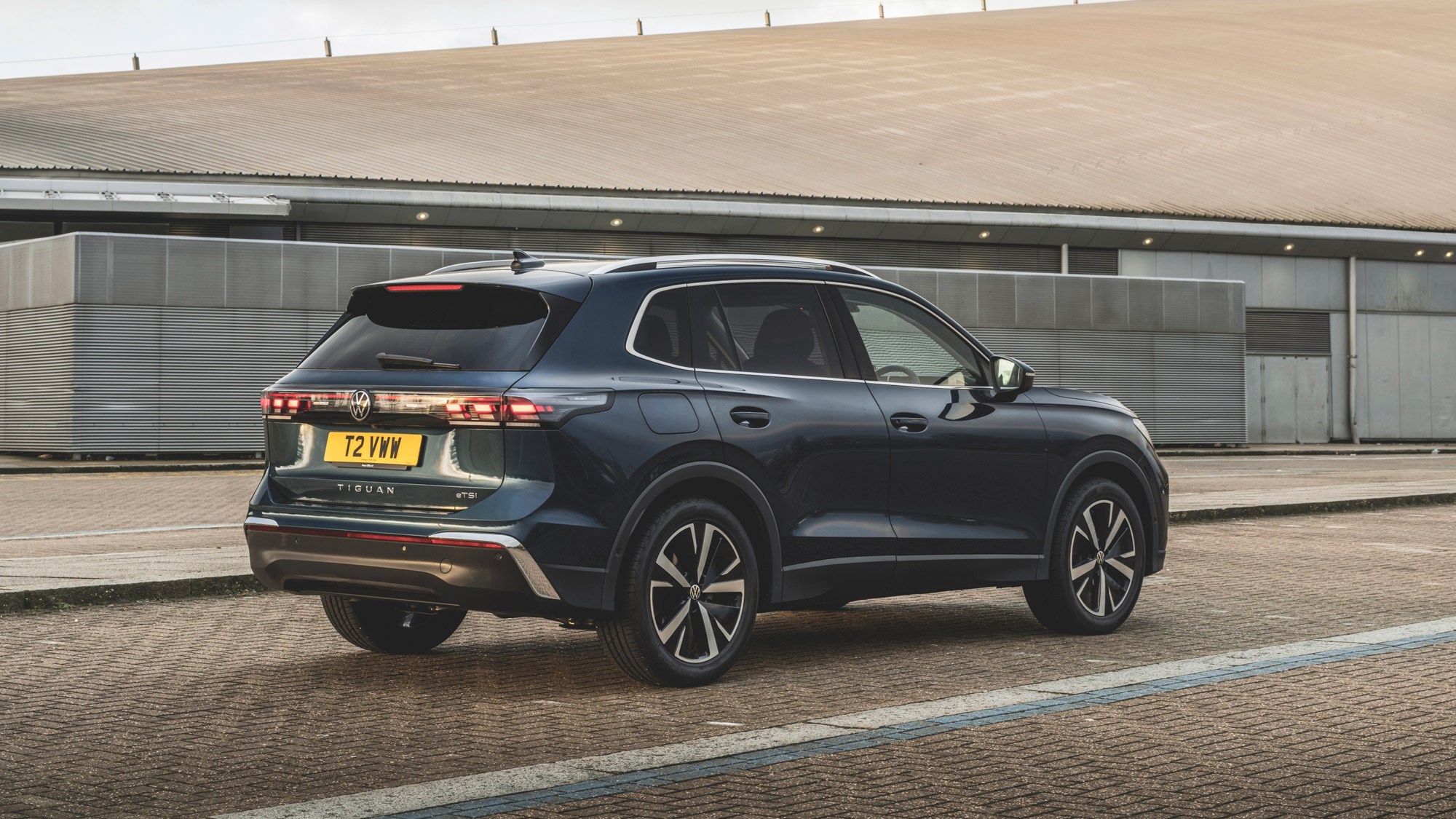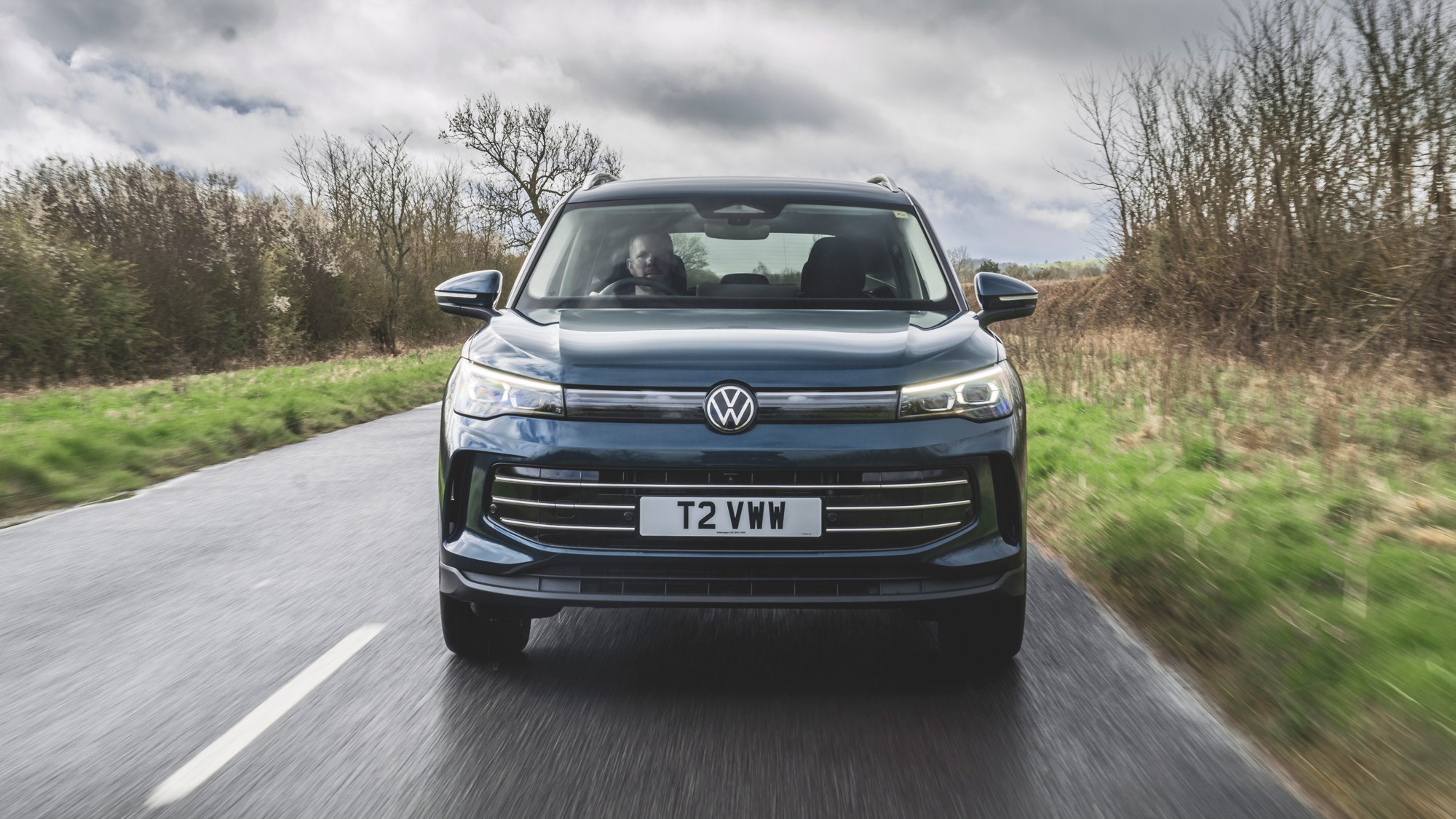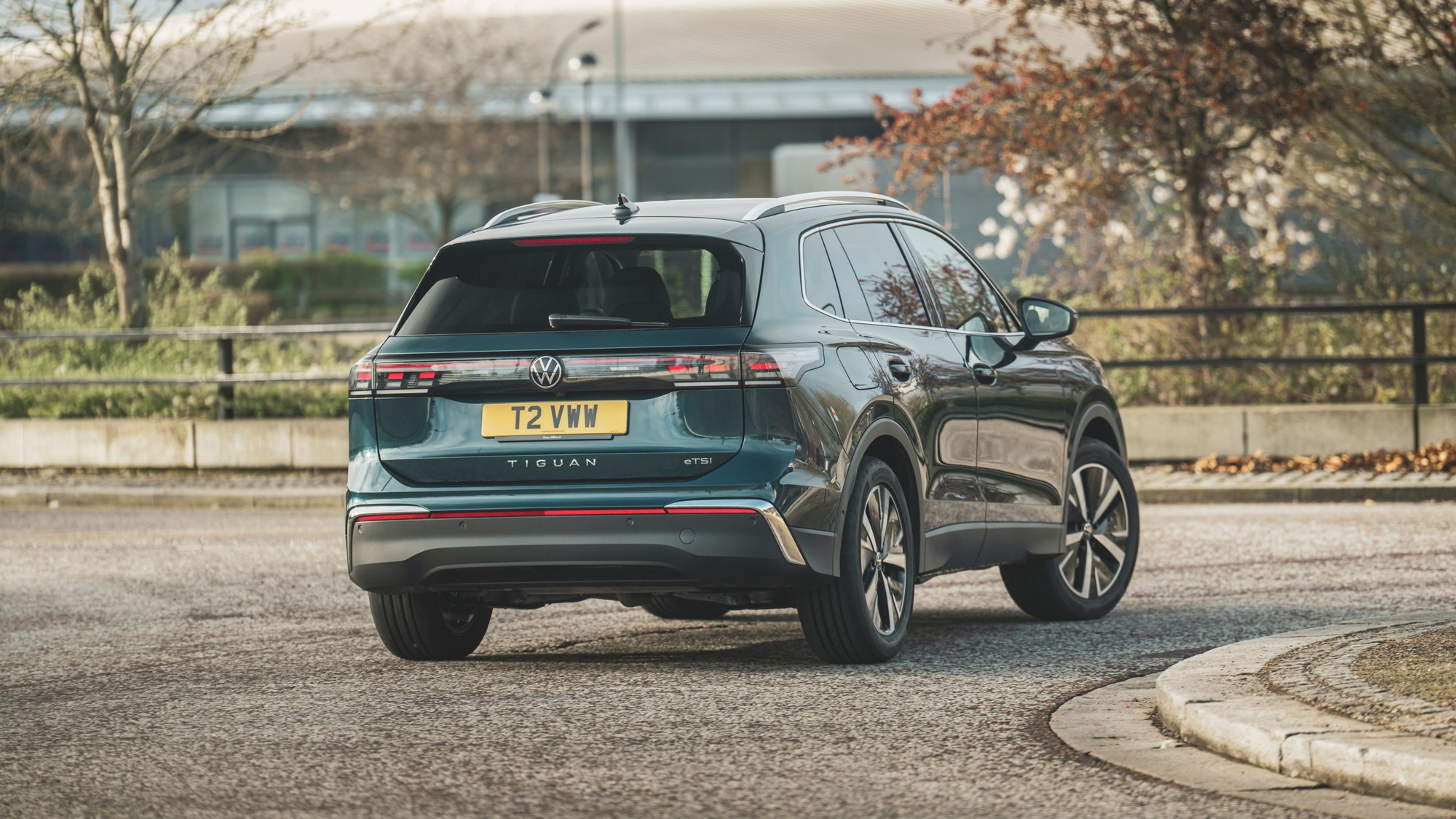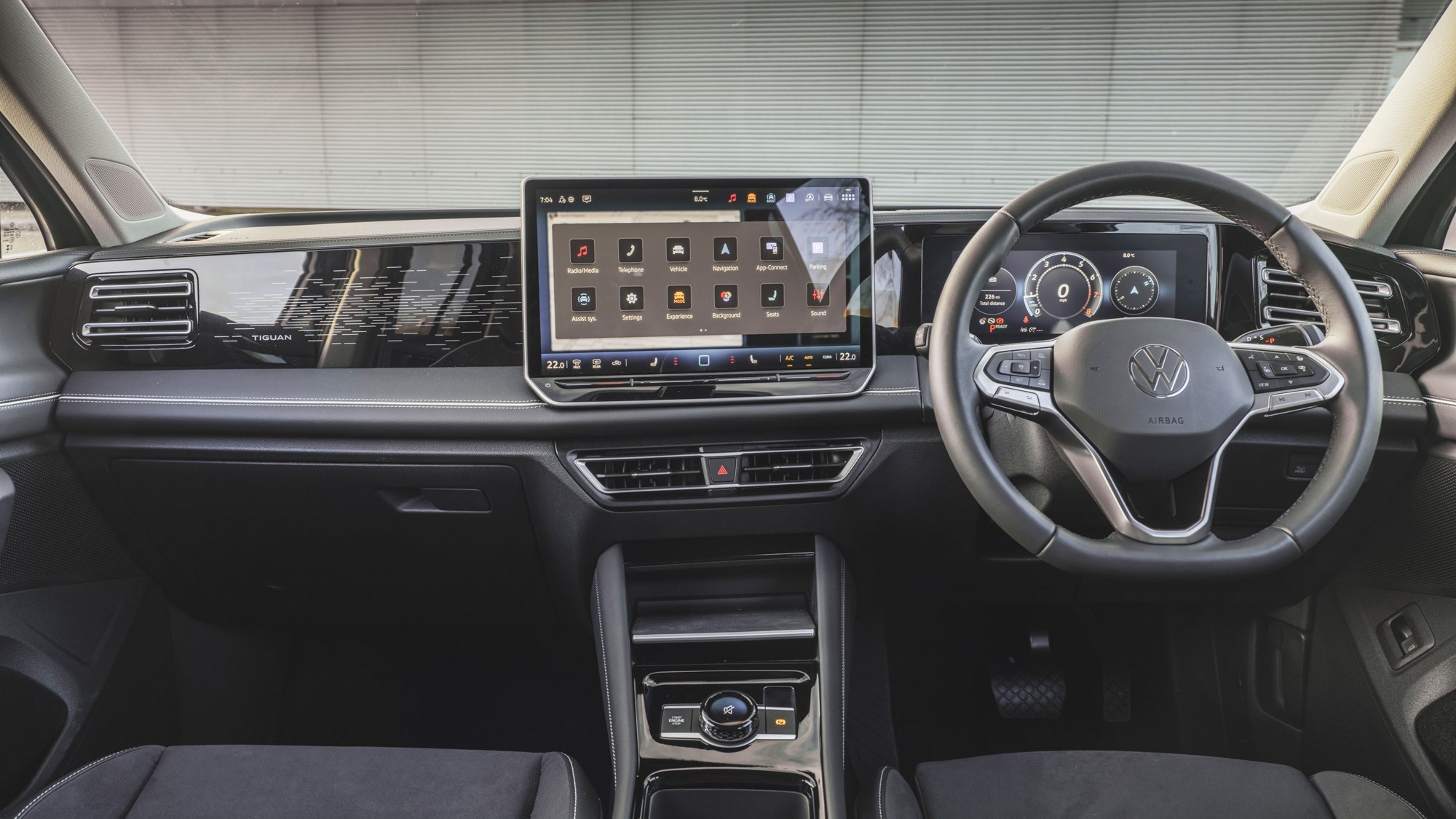► New Volkswagen Tiguan goes for evolution
► Offered as mild-hybrid, diesel and PHEV
► Excellent all-rounder with lots of tech
It’s a sign of just how dominant family SUVs have become that no longer is it the Golf topping the global sales charts at Volkswagen but rather the Tiguan crossover. Remarkably that’s been the case since 2018, likely not helped by the Buttongate saga of the latest Golf 8.
Close to eight million have been produced since 2008, and given its success you can’t blame Volkswagen for not wanting to rewrite history with this new third-generation model.
The Tiguan is a monumentally important car for Volkswagen, and the family bus of choice for those wanting something a bit nicer than a Nissan Qashqai but without the great expense of a more premium offering. But has Wolfsburg got it right with its new Tiguan? CAR’s driven it on UK roads for the first time to find out.
At a glance
Pros: Excellent quality, very spacious, great engine choice
Cons: Unsettled ride without DCC, a bit expensive
What’s new?
Volkswagen hasn’t reinvented the wheel with this new Tiguan, but equally it’s also far from just a light facelift. It’s longer, taller and wider than before, and offers more space inside. It sits on the same MQB Evo platform that’s shared with the new Passat, with the two cars sharing plenty in common in the powertrain and technology departments.

The Qashqai sits in the middle of more mass-market offerings, such as the Nissan Qashqai, but equally its pricer throws it into the circle of more premium rivals like the Volvo XC40.
Skirting the conservative styling, with an ID-like front end, and skipping straight to the interior, things get a little more interesting. There’s a new infotainment system, which echoes what’s offered in the ID range, and you can’t escape noticing that it’s super-sized, ranging from 12.9 to 15.1 inches. You could say it’s too big and a bit intrusive, but we’d argue it’s easy to drive, with large buttons and a simple user interface.
What are the specs?
The Tiguan is Volkswagen’s modern-day people’s car and comes with a variety of engines to suit most – unless you want an EV, that is. All come with a DSG automatic transmission these days too.
The plug-in hybrids arrive in summer 2024 with a new 1.5-litre petrol-electric setup available with outputs of 201bhp or 268bhp. There’s a much larger 19.7kWh battery too, which Volkswagen says allows for a claimed electric range of around 60 miles. The Tiguan is also one of only a handful of cars in its class still available with a diesel engine – VW’s tried-and-tested 148bhp 2.0-litre unit, of course.

But it’s the 1.5-litre mild-hybrid petrols that will account for the bulk of sales, with the choice of 128bhp or 148bhp. Our test car uses the latter, and allows for a decent mix of performance and efficiency. Sprinting to 62mph takes 9.1 seconds with Volkswagen claiming 43mpg, though we suspect you’ll get a bit more than that in the real world.
How does it drive?
Volkswagen likes to kit out its international test cars with its famed Dynamic Chassis Control (DCC), and our first impressions from the European launch were impressive. You can slide the settings between soft and firm, with great differences between the two. But on UK roads in a non-DCC-equipped test car, I’m not as impressed. The ride has a naturally firm edge to it and can feel quite unsettled on rougher roads. Not ideal for the UK.
But elsewhere, the Tiguan delivers. Volkswagen has pushed the boat out here to make the Tiguan more engaging to drive and it Volkswagen Tiguan front. It’s no performance SUV but there’s a decent weight and accuracy to the steering and it’s better than many cars in its class when you get your toe down – oddly the faster you go, the better it seems.

The 148bhp 1.5-litre mild-hybrid offers mild coasting opportunities to improve efficiency, and is a good match for the Tiguan. It sounds a bit coarse under harsh acceleration but offers enough pace to get you up to speed and quietens down nicely at speed. There will be more powerful 2.0-litre engines on the way, but this standard engine feels like the pick of the line-up.
What about the interior?
Just like the new ID.7, many of the Tiguan’s controls are controlled by the generously proportioned infotainment screen. The largest 15.1-inch iteration dominates your view, but at least makes using its functions a cinch. It’s combined with the firm’s touch-sensitive pads for ancillary controls (such as heating and volume controls), and other than the reinstatement of buttons on the steering wheel, there are few physical controls. It’s still not great to work with while driving, but it’s a big improvement compared to the screens in the Golf 8 and first ID.3. The cabin quality is largely excellent throughout too, and a cut above some of the more mass-market offerings.

It also now comes with ChatGPT, should you decide you don’t want to use Apple CarPlay or Android Auto. In terms of performance, it was a mixed bag offering answers to a variety of questions, but not really adding to the motoring experience.
On a practical note, there are sliding back seats and the rear space is superb, with more than enough room for tall adults. The 652-litre boot is also one of the largest in its class, as well as being roomier than the outgoing Tiguan.
Before you buy?
Like the engine choice, there are a great deal of trims to choose from as well; Tiguan, Life, Match, Elegance and R-Line.
Entry-level ‘Tiguan’ cars feature 17-inch alloys, a 12.9-inch touchscreen, a large digital instrument cluster, a suite of driver assistance tech and a reversing camera. You’re limited to the entry-level petrol engine here, and it starts from £34,075.
The Match trim makes the most sense, starting from £36,095, as it brings an electric boot, keyless entry and adaptive cruise control for quite an attractive price.

But most buyers are expected to opt for the big-wheeled, sportier-looking R-Line. Starting from just under £40,000, it’s not cheap, though does come with luxuries like massaging seats and 30-colour ambient lighting.
Tiguans at the lower end of the price range make the most sense, but whatever you do, try and make sure the £1,035 Dynamic Chassis Control is selected. It’s an option box you won’t regret ticking.
Verdict
The family SUV segment is now the most popular and congested around, and things have moved along significantly since the last Tiguan debuted in 2016. But VW has the right car for the job to make sure its bread-and-butter remains relevant. This new Tiguan ticks all of the right boxes in the family SUV class – principally spaciousness, quality and visual appeal outside of the school gates, especially if you go for the R-Line.
It’s not cheap and there are reservations about the ride if you don’t stump up for the fancy suspension – and it’s annoying that you have to do so – but VW’s new Tiguan is an excellent choice, and one that will likely continue being VW’s cashcow.
Specs are for a Volkswagen Tiguan Elegance 1.5 eTSI 150 DSG